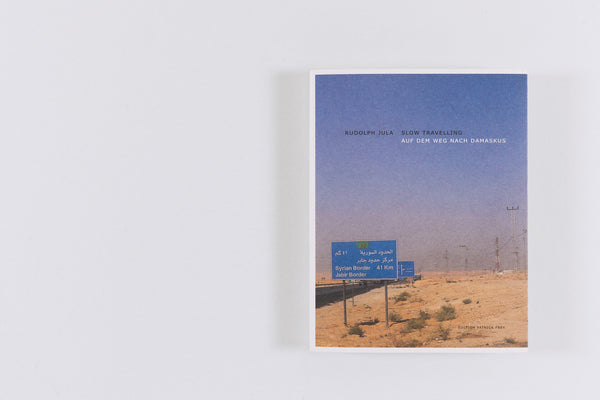
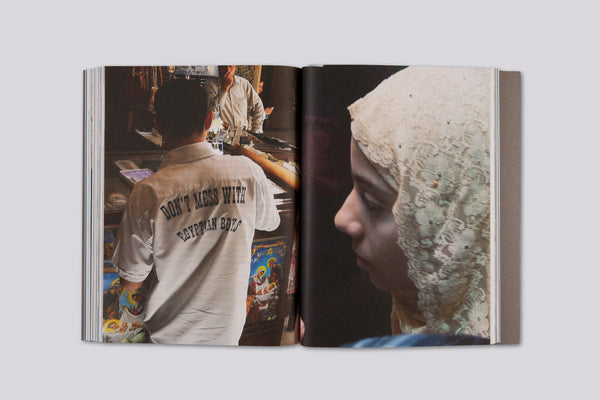
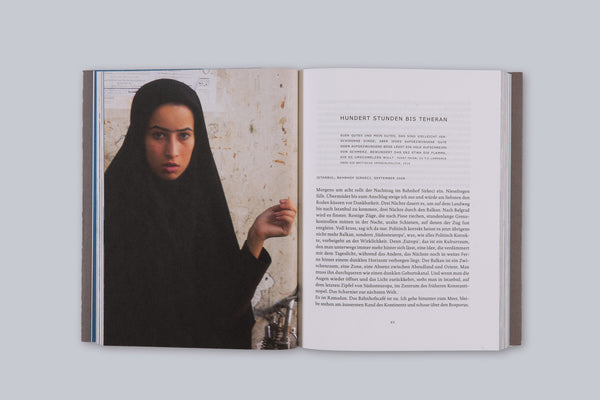
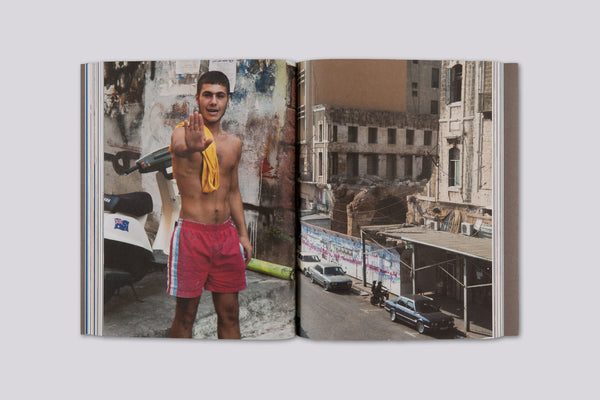
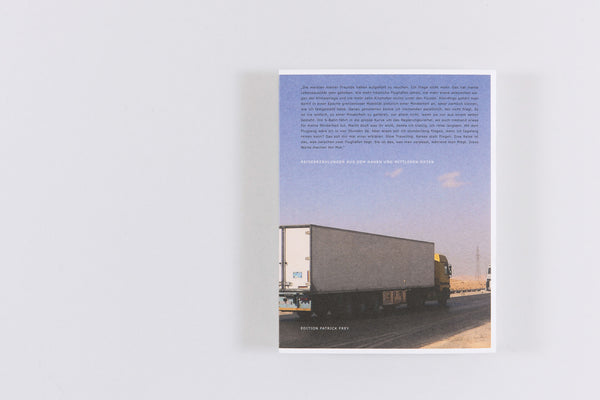
Rudolph Jula
Slow Travelling - Auf dem Weg nach Damaskus
Edition Patrick Frey, Zürich — 2011
“There are many reasons not to fly. It’s boring, the air conditioning makes you ill, the risk of thrombosis. It is cramped, smoking is not allowed, and beneath your feet lies ten kilometers of air. I don’t like not having anything under me. Some people stop smoking. I stopped flying. It was the right decision. But in an age of infinite mobility this means you suddenly belong to a minority. Probably a very small one, at least I don’t know anyone personally who doesn’t fly. That is why I decided to start a trend all by myself. Slow Travelling. I travel slowly. Travelling instead of flying. A journey is pretty much exactly what lies between two airports, what you see way down there in ten kilometer linear distance. The ocean, all those countries that you can view from high above. A journey is what you miss when you fly.” (excerpt from Auf dem Weg nach Damaskus)
Auf dem Weg nach Damaskus is eight long travel stories by Rudolph Jula. They always lead to land or water, to the centers of the so-called Islamic World, to Damascus, to Teheran, to Lebanon, through Jordan to Cairo and from there back to globalised Turkey. The title story takes the narrator to Ancona, to the coast of Anatolia, to Aleppo and the Syrian capital. There the narrator discovers the “Straight Street” where the conversion of Paul took place, where Christianity as a universal religion began and the idea of equality was born. This street really does exist. For the last 2000 years it has run through the old town of Damascus, an important Christian site in the middle of the capital of an Islamic “rogue state.” The search for one’s self amidst the unfamiliar, for one’s identity among hostile images, for the historical roots of the idea of equality – these themes are not conveyed on a theoretical level, but through encounters, situations and conversations that are based both on reality and the imagination. The stories follow the principles of a documentary film that achieves its authenticity through its orchestration.
Jula’s “travel photos” were also created from this perspective. They do not illustrate the text, but instead present the subjective view of the narrator who, looking at incidental details, seems to just happen upon what is important.